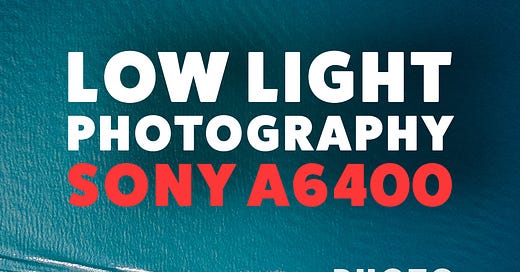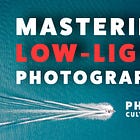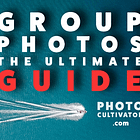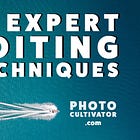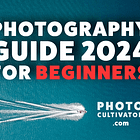Mastering Low-Light Photography: Sony a6400 Tips & Darktable Workflow
I hope you're enjoying your Sony a6400 and Sony F1.4 50mm Prime lens.
These tools offer exceptional low-light performance and versatility, making them perfect for various photography scenarios.
In this newsletter, I’ll share some tips and tricks to help you get the most out of your equipment, especially when shooting in challenging lighting conditions.
1. Understanding Low Light Photography
When shooting in low light, it's critical to manage your exposure carefully.
Here are some key points to consider:
Use a higher ISO: Increase the ISO sensitivity to capture brighter images, but be aware that this can also lead to increased noise
Use a slower shutter speed: If your subjects are relatively still, use a slower shutter speed to allow more light into the camera. However, this can lead to motion blur, so it's crucial to stabilize the camera
Always shoot in RAW: Retaining more image data, RAW files provide greater flexibility when editing
2. Tips for Shooting in Darktable
For processing your low-light RAW images in Darktable, follow these steps:
Adjust the exposure and white balance: Correct the overall brightness and color temperature of your images.
Apply noise reduction: Reduce the noise caused by high-ISO shooting in low-light
Use sharpening: Boost details without introducing more noise
Lens correction (if applicable): Fix distortions or aberrations caused by the wide aperture.
3. Real-Life Examples and Solutions
Here are some examples of common issues you might encounter in your low-light photos and ways to address them:
Images are too dark: Adjust the exposure and white balance to correct the overall brightness and color temperature
Images are too noisy: Apply noise reduction to minimize the impact of high-ISO shooting in low light
Motion blur: Use a tripod to stabilize the camera and use a slower shutter speed
I hope these tips and tricks help you improve your low-light photography skills with your Sony a6400 and F1.4 50mm Prime lens.
Practice makes perfect.
So keep shooting and experimenting with different settings to find what works best for your unique style and preferences.
I hope that help,
-Hakan.

